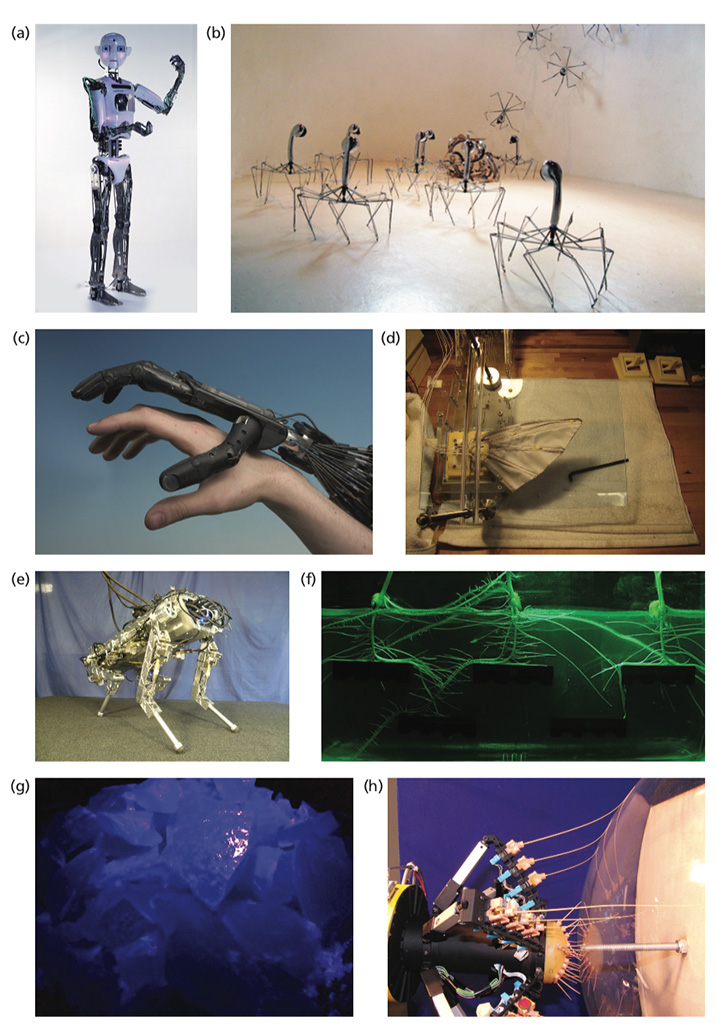Contemporary technology is still far removed from the versatility, scalability, and sustainability of living systems. Harnessing natural principles could render a radically new class of technology that is renewable, adaptive, robust, self-repairing, social, potentially moral, perhaps even conscious. This is the realm of “living machines”. Within the domain of living machines we distinguish two classes of entities—biomimetic systems that harness the principles discovered in nature and embody them in new artifacts, and biohybrid systems that couple biological entities with synthetic ones in a rich and close interaction so forming a new hybrid bio-artificial entity.
Research in biomimetic and biohybrid systems is flourishing at the moment and this handbook surveys the state-of-the-art and points to the opportunities ahead. Promising areas in biomimetics include self-organization and co-operativity, biologically-inspired active materials, self-assembly and self-repair, learning, memory, control architectures and self-regulation, locomotion in the air, on land or in water, perception, cognition, control, and communication. In all of these areas, the potential of biomimetics is being shown through the construction of a wide range of different biomimetic devices and animal-like robots. Biohybrid systems is a relatively new field, with exciting and largely unknown potential, but one that is likely to shape the future of humanity. Examples of current research include brain-machine interfaces—where neurons are connected to microscopic sensors and actuators—and various forms of intelligent prostheses from sensory devices like artificial retinas, to life-like artificial limbs, brain implants, and virtual reality-based rehabilitation approaches.
This Handbook includes contributions from leading international researchers drawing ideas from science, engineering, and the humanities. Their contributions explore the potential of many kinds of Living Machine technology, and also consider their possible future impacts both on society and on how we see and understand ourselves.
Reference

